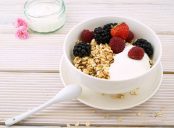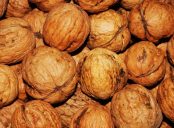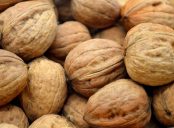High Protein Diet: A Comprehensive Guide for Optimal Health and Fitness

Introduction: Understanding the High Protein Diet
The high protein diet has gained significant popularity in recent years, with many individuals turning to this eating approach for weight loss, muscle gain, and overall health improvement. In this article, we will provide an in-depth exploration of the high protein diet, discussing what it entails, its various types, and its benefits and drawbacks. Whether you are a fitness enthusiast, looking to shed some pounds, or simply curious about nutrition, this comprehensive guide will equip you with the knowledge you need to make informed decisions about your dietary choices.
I. Understanding the High Protein Diet

The high protein diet revolves around consuming foods that are rich in protein while limiting carbohydrates and fats. Unlike some other diets, the high protein diet emphasizes the importance of obtaining a significant portion of your daily caloric intake from protein sources. Proteins are essential macronutrients that play a crucial role in building and repairing tissues, boosting metabolism, and regulating various bodily functions. By increasing your protein consumption, you can support muscle growth, enhance satiety, and improve overall body composition.
II. Exploring High Protein Diet Variations
1. Ketogenic Diet: One popular variation of the high protein diet is the ketogenic diet, which emphasizes very low carbohydrate intake, moderate protein consumption, and high fat intake. By drastically reducing carbohydrates, the body enters a state of ketosis, where it primarily uses fats for energy instead of carbohydrates.
2. Paleo Diet: The paleo diet, also known as the ”caveman” diet, focuses on consuming foods that were available to our ancestors during the Paleolithic era. This diet typically includes lean proteins, fruits, vegetables, nuts, and seeds while excluding processed foods, grains, and dairy products. Although protein is a significant component of the paleo diet, it also emphasizes the importance of consuming a variety of whole foods.
3. Atkins Diet: Developed by Dr. Robert Atkins, the Atkins diet is a low-carbohydrate, high-protein diet that aims to switch the body’s metabolism into a state of ketosis. This diet is divided into four phases, with each phase gradually reintroducing carbohydrates back into the diet.
III. Quantitative Measurements of High Protein Diet
When considering a high protein diet, it is essential to understand the recommended daily protein intake for various individuals. As a general guideline, the average sedentary adult requires approximately 0.8 grams of protein per kilogram of body weight. However, athletes, bodybuilders, and individuals engaging in intense physical activities may need higher protein intakes to support muscle growth and repair. Consulting with a healthcare professional or registered dietitian can help determine the appropriate protein intake for your specific needs.
IV. Distinguishing Between Different High Protein Diets
While all high protein diets share a common emphasis on protein consumption, they may differ in their macronutrient composition and food choices. For example, the ketogenic diet strictly limits carbohydrate intake, while the paleo diet focuses on whole, unprocessed foods. Understanding these differences is crucial as it allows individuals to choose a high protein diet that aligns with their lifestyle and goals.
V. Historical Review of Pros and Cons of High Protein Diets
Over the years, high protein diets have faced mixed reviews regarding their advantages and drawbacks. Some potential benefits of high protein diets include increased satiety, better weight management, improved muscle mass, and enhanced metabolic function. However, concerns have been raised regarding potential risks, such as increased strain on the kidneys, nutrient deficiencies, and the potential for excessive intake of saturated fats. It is essential to approach any dietary changes with caution and consult with a healthcare professional to ensure they are safe and suitable for your unique circumstances.
Conclusion
The high protein diet offers a promising approach to optimize health and fitness, but it is crucial to understand its nuances and potential implications. This comprehensive guide has explored the various types of high protein diets, their quantification, differences, and historical pros and cons. While adopting a high protein diet can yield positive results, it is always advisable to tailor it to individual needs, incorporate a variety of nutrient-rich foods, and seek professional guidance for a well-rounded approach to nutrition. By making informed choices, you can harness the power of protein to support your health and wellness goals.





















